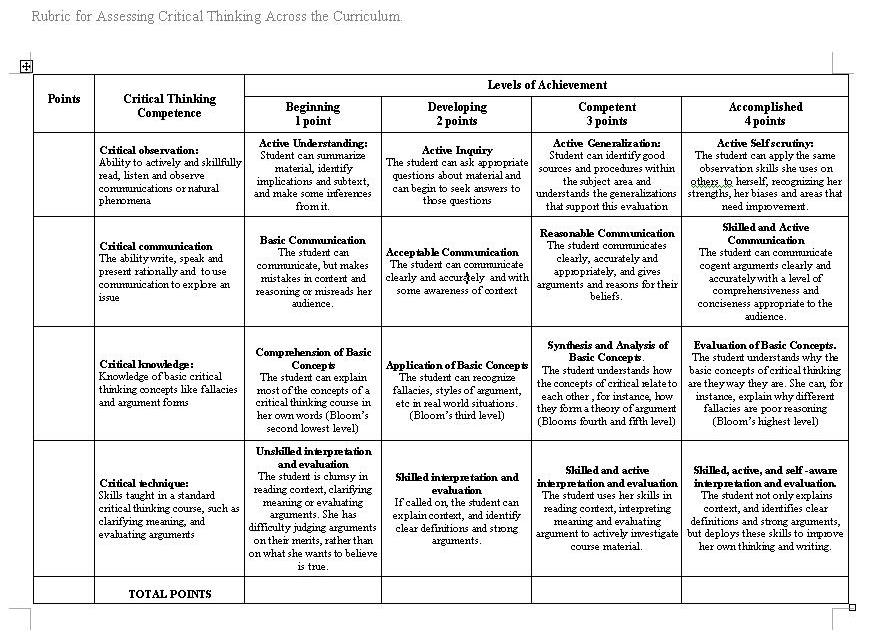What is a Rubric? (SchoolNet SA and Wikipedia)
When we assess a learning process or a student product, we look for evidence of learning. We need ways in which we can compare the evidence with the intended outcomes of learning. There are different ways to do this, e.g. lists of criteria, a memorandum and a rubric. Rubrics are now one of the most widely used assessment tools. Their strength is based on the fact that they are able to provide a clear description of the desired skills and/or knowledge. Therefore they are often considered good tools for providing formative feedback to the learner.
(Ref: SchoolNetSA)
A rubric is an assessment tool for communicating expectations of quality. Rubrics support student self-reflection and self-assessment as well as communication between assessor and assessees. A rubric is a set of criteria and standards typically linked to learning objectives and that is used to assess or communicate about product, performance or process tasks.

Rubric Example Image: Rob Loftis
A rubric is an attempt to communicate expectations of quality around a task. In many cases, rubrics are used to delineate consistent criteria for grading. Because the criteria are public, a rubric allows teachers and students alike to evaluate criteria, which can be complex and subjective. A rubric can also provide a basis for self-evaluation, reflection and peer review. It is aimed at accurate and fair assessment, fostering understanding and indicating the way to proceed with subsequent learning/teaching. This integration of performance and feedback is called ongoing assessment or formative assessment.
A rubric can best support the teaching and learning process when it is shared with the learner at the beginning of the task creation or development process. When students are apprised of grading criteria from the start, they can be more involved in the process of working toward success. Additionally, a rubric developed with learners can increase their understanding of the task and the expectations around quality.
Rubrics are generally thought to promote more consistent grading or marking and to develop self-evaluation skills in students as they monitor their performance relative to the rubric. However, rubrics are not without their critics who are concerned that rubrics can never truly capture the complexity of written work. If rubrics are to be useful, they must capture all the actual objectives of an assignment.
The following common features of rubrics can be distinguished:
- Focus on measuring a stated objective (performance, behaviour or quality);
- Use a range to rate performance;
Contain specific performance characteristics arranged in levels indicating the degree to which a standard has been met.
[1] Wikipedia. (2011) Rubric (academic). Retrieved from http://en.wikipedia.org/wiki/Rubric_(academic)